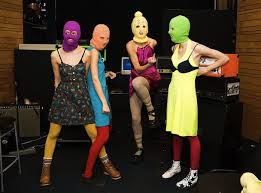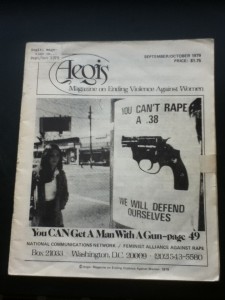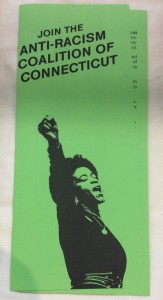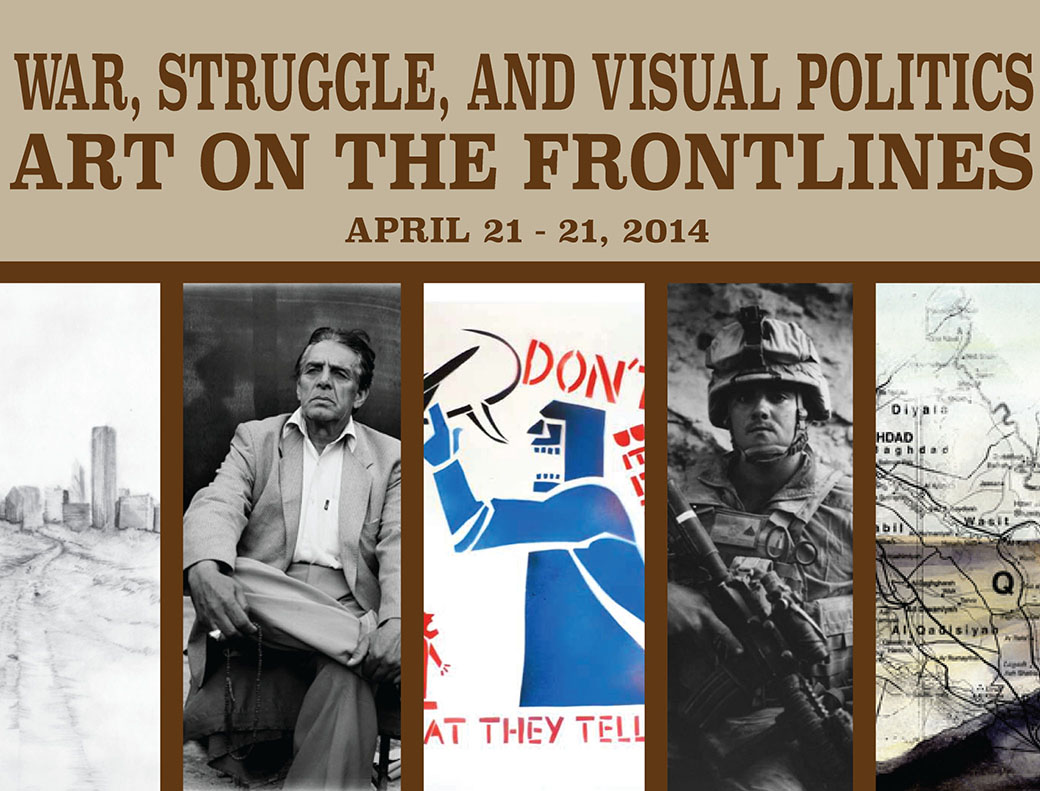On June 18 2015, Dylann Roof, 21 years old, shot and killed nine African-Americans at the Emanuel African Methodist Episcopal Church in Charleston, South Carolina. When Roof was apprehended, he wore the flags of Apartheid-Era South Africa and Rhodesia, former white supremacist settler colonial states in Southern Africa. Roof also had Confederate flags hung on his walls and frequented white power websites. These race based murders fueled an ongoing debate about Confederate symbolism and its usage in the private and public spheres. The Alternative Press Collection at the Archives & Special Collections is comprised of fringe publishing from both ends of the political spectrum such as White Patriot and Death to the Klan. The current debate around the Confederate flag draws on long standing uses of historical interpretation and cultural identity dating to the Civil War and Reconstruction era of 1861-1877. As demonstrated in this exhibition currently on display in the Archives through these selected materials from the Alternative Press, Northeast Children’s Literature and Labor collections, figures such as Confederate General Nathan Bedford Forrest, abolitionists John Brown and Frederick Douglass serve as symbolic totems of heritage, spirituality and citizenship. Continue reading
Tag Archives: activism
Filming of Abuse, Archiving for Authenticity
As we have seen over the last 10 years, access to portable video devices has risen in the US as well as the world over. In 2014 alone, video footage of police brutality and homicide have overturned arrests and brought charges to those responsible. Often, human rights violations and atrocities are now being recorded by observers and activists who want their footage to be seen. WITNESS, a leading documentation advocacy organization, has produced a readily accessible document for how-to-film and archive footage for preservation and access.
Recently, head archivist and co-author of the Witness video archive, Yvonne NG, was interviewed on Democracy Now! regarding the most recent police brutality incidents in New York City and Ferguson, MO being promoted on social media.
Resources from Witness: http://witness.org/resources/
The Archives and Special Collections in collaboration with the Dodd Center and Booklyn Artists Alliance, are hosting two days of events on War, Struggle and Visual Politics: Art on the Frontlines. Events will be held in the Dodd Research Center on April 21st and 22nd in conjunction with the Week In Humanities. Artists Seth Tobocman, Stephen Dupont, Marshall Weber, Chantelle Bateman and Aaron Hughes will be holding talks, workshops and presenting artwork around the focus of politics and activism in art and war. Students, community members, veterans and artists are encouraged to attend these events to provide a dynamic facilitation of how we utilize art, activism and memory to cope with war.
Art work will be on display in galleries as follows:
Aaron Hughes : Institute for the Humanities : College of Liberal Arts and Sciences
Seth Tobocman : Contemporary Art Gallery : School of Fine Art
Stephen Dupont : Coop Bookstore : Downtown Stores
For a full list of events, please follow this link for the Week in Humanities.
Punks Freed
 In a bold move, the Putin administration granted an amnesty releasing 30+ political prisoners from Russian penitentiaries last week. Included in this band of rogues were members of the Greenpeace activist contingent arrested for disrupting Gazprom’s arctic drilling operations, the former richest man in Russia oil tycoon Mikhail Khodorkovsky, and the two remaining jailed members of the Russian feminist punk band Pussy Riot who denounced the church and Putin while taking the stage of a large Orthodox Church in Moscow by force. Pussy Riot members had been moved to Siberian prisons as a punitive measure. Many media sources, as well as the prisoners themselves, believe that the amnesty was passed to contradict Russia’s glaringly bad human rights record. This measure precedes the 2014 Olympics which will be hosted this year in Sochi. Already large mobilization campaigns have begun to boycott the games because of the discrimination and brutality which LGBTQ communities face in even the most cosmopolitan centers of the country.
In a bold move, the Putin administration granted an amnesty releasing 30+ political prisoners from Russian penitentiaries last week. Included in this band of rogues were members of the Greenpeace activist contingent arrested for disrupting Gazprom’s arctic drilling operations, the former richest man in Russia oil tycoon Mikhail Khodorkovsky, and the two remaining jailed members of the Russian feminist punk band Pussy Riot who denounced the church and Putin while taking the stage of a large Orthodox Church in Moscow by force. Pussy Riot members had been moved to Siberian prisons as a punitive measure. Many media sources, as well as the prisoners themselves, believe that the amnesty was passed to contradict Russia’s glaringly bad human rights record. This measure precedes the 2014 Olympics which will be hosted this year in Sochi. Already large mobilization campaigns have begun to boycott the games because of the discrimination and brutality which LGBTQ communities face in even the most cosmopolitan centers of the country.
In relation to this, punk rock still carries a torch for challenging power through art and subversive culture. A new collecting area has been initiated for the Alternative Press Collection at the Archives & Special Collections for 1980s and 90s punk rock ephemera. Still being cataloged, the Joe Snow Punk Rock Collection features show flyers, demos, distro catalogs, photographs, zines and lots and lots of Maximum RocknRoll. The finding aid will be published in the coming month and is currently available for research.
Contact the curator for more details on the APC Punk Rock Collection.
Take Back the Night, the Day, the Street, the Home…
Wednesday, April 17th is Take Back the Night on the University of Connecticut campus. An event recognized across North America in response to violence against wimmin. Since its inception Take Back the Night has been about reclaiming space beyond the physically passive act of recognition and observation. Wimmin, the disproportionate victims of domestic violence, rape, sexual assault and harassment, have found solidarity through the action of speaking out and mobilization en masse against this violence. It’s sister mobilization, Slutwalk, has also achieved support across the broad spectrum of wimmin who experience patriarchy in the streets, an intended social space for interaction in work, transit and play.
The Alternative Press Collection (APC) in the Archives contains numerous publications on wimmin-positive theory and praxis in response to gender violence since the 1960s. Of note is the feminist publication Aegis: Magazine on Ending Violence Against Women published in 1978 by the Feminist Alliance Against Rape. Defined by the magazine’s statement of purpose, the movement to build solidarity through information was seminal in establishing wimmin’s resources in regions where silence was (is) the normative response to gender violence:
The purpose of Aegis is to aid the efforts of feminists working to end violence against women. To this end, Aegis provides practical information and resources for grassroots organizers, along with promoting a continuing discussion among feminists of the root causes of rape, battering, sexual harrassment and other forms of violence against women.
Depicted in the image below is the cover of the September/October 1979 issue, portraying the advocacy debate around wimmin’s rights to self defense.
 In addition to our extensive APC collection of periodicals is a recently acquired special collection art installation about building solidarity and non-violence amongst wimmin through art therapy. In this case, pulping panties into paper! From the Peace Paper Project comes another alliterative piece, Panty Pulping! The installment consists of loose pieces of paper made from mulched wimmin’s underwear that has been forged anew through storytelling and constructing the foundations of a new page for which a narrative can be written about wimmins voices together.
In addition to our extensive APC collection of periodicals is a recently acquired special collection art installation about building solidarity and non-violence amongst wimmin through art therapy. In this case, pulping panties into paper! From the Peace Paper Project comes another alliterative piece, Panty Pulping! The installment consists of loose pieces of paper made from mulched wimmin’s underwear that has been forged anew through storytelling and constructing the foundations of a new page for which a narrative can be written about wimmins voices together.
To view these pieces or any materials about wimmin’s rights and radical feminism, please contact the curator.
Slingshot Collective
A recent acquisition to the Archives’ Alternative Press Collection is Slingshot, a radical journal published by the Slingshot Collective out of Berkeley, CA. We have early back issues from 1988 up to the current issue. In addition, we also carry samplings of the popular Slingshot Organizers which are artistically, historically and resourcefully compiled booklets that function as the primary fund raiser for the collective.
In addition, the collective published a book edited by Terri Compost in 2009 about the People’s Park in Berkeley which was a site of contention beginning in the late 1960s between the University of California and the community invested in making the space public. It currently exists as a semi-free space for gardening, theater, play and all things other than volleyball.
These materials and other collective publishing ventures can be accessed in the Alternative Press Collection at the Archives & Special Collections, Thomas J. Dodd Research Center, University of Connecticut.
Alternative Press Collection LibGuide Links
The inherently decentralized and accessible nature of the internet has provided activists and underground press the ability to make their voices heard, requiring nothing more than a computer and a connection. Admittedly a little over naive, the potential for the Internet as an organizational structure has new channels for empowerment. As an academic research institution such as ours at UConn, we face challenges in attempting to document the digital documentarians. While we have one of the largest Alternative Press Collections in the country, our ability to capture tweets, status updates and blog rolls is limited. One important distinction to make regarding digital representation versus physical is the utter impermanence of these sources, particularly in an un(der)funded enterprise as many activist groups and presses are. Arguably, the physical print is also impermanent but the comparative longevity of print to a blogger site is quite drastic. The philosophical archival dimensions of thinking about these kinds of challenges remains rooted in the theory foundations which have transcended evolutions in media. A temporary remedy to this current problem in documenting underground press is to provide links to the digital representations of prominent sources and accessible organizations with a broad base.
I have updated the Library Guide on Introducing the Alternative Press Collection, by including a tab of Radical Internet Sources. This list is as imperfect as any sampling of the internet can be, however it will be continually updated and perpetually becoming. For an insightful view of the web’s virtual empowerment, see Lewis Call’s Postmodern Anarchism (Boston; Lexington Books, 2002).




